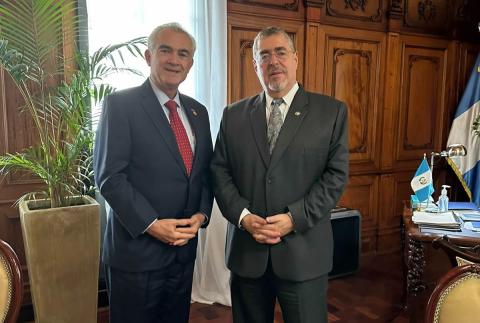Op-ed
The webinar "Measurement and analysis of international trade from a gender perspective", held on May 13, 2021, was attended by government authorities of Chile and Uruguay, representatives of Trade Promotion Organizations, Mechanisms for the Advancement of Women, and the National Statistical Institutes of both countries, and the Division for Gender Affairs and the International Trade and Integration Division of ECLAC. This event is the first joint activity between Chile and Uruguay, within the framework of the Gender Chapter of the Free Trade Agreement between the countries, and aimed to discuss the forms of production, collection, and analysis of data to measure the impact of international trade from a gender perspective.
Nicole Bidegain, Social Affairs Officer of the Division for Gender Affairs noted that the COVID-19 pandemic has led to a departure of women from the workforce and an increase in the overload of unpaid care work. She also pointed out that it has had severe impacts in terms of falling employment and income for women. Likewise, she explained that in the region 60% of women workers are employed in sectors at high risk of being affected by the pandemic, among which are sectors associated with international trade such as manufacturing and tourism.
Bidegain highlighted that according to the information for 11 countries in the region, only 1 out of 10 women is employed in sectors associated with exports. However, it is essential to go beyond the averages since differences are identified between countries according to their productive structure, export specialization, and gender inequalities in the labor market. In Uruguay, the employment of women in the export sector reaches 18.7% of total employment, and in Chile only 12.4%. She added that export employment has not contributed to overcoming gender labor segregation. In sectors such as textiles and clothing, more than 60% of the occupation corresponds to women, and in other services, they reach 46% of the total occupation in the sector (See presentation, available in Spanish).
Subsequently, José Durán, Chief of the Regional Integration Unit of the International Trade and Integration Division, highlighted that based on the processing carried out by ECLAC with information from the input-output matrices of Chile and Uruguay and the Household Surveys, the wage gaps between men and women are higher in highly exporting sectors (24.3%) than in low-export industries (11.1%), reaching 25% in Chile and 20% in Uruguay. Durán said that public policies cannot be developed in a vacuum. In this sense, he stressed that data is essential to assess the impact that trade agreements have on the lives of women as entrepreneurs, workers, and main care workers (See presentation, available in Spanish).
Bidegain stressed that it is key to strengthen the articulation between organizations that produce and users of the information on gender and trade, promoting alliances between the National Statistical Offices, the Trade Promotion Offices and Sector Ministries, and the Mechanisms for the Advancement of Women and establishing mandates for the construction, updating and dissemination of data periodically in pursuit of the agreements established in the Montevideo Strategy and the Santiago Commitment.
Stefanía Doebbel, Chief of the Department of Foreign Relations of the Ministry of Women and Gender Equity of Chile, argued that, despite important advances in international trade, women face multiple obstacles, even before deciding to internationalize their enterprises, related to greater care responsibilities and difficulties in accessing credit. For Chile, the agreement with Uruguay constitutes a historic achievement, as it was the first of the five agreements that have gender chapters.
On the other hand, Natalia Reyes, Chief of the Gender Information System of the National Institute of Women of Uruguay, stressed that gender inequalities persist in the labor market is expressed in lower rates of labor participation of women compared to men, lower labor income and higher unemployment rates. She stressed that although the country has made progress in terms of gender mainstreaming in public policies, a coordinated effort is essential to produce gender statistics in production and international insertion.
At the meeting, the National Institutes of Statistics of Chile and Uruguay spoke about the progress, weaknesses, and opportunities that exist in the production and analysis of statistical information with a gender perspective for the evaluation of the impacts of trade in both countries; while the Trade Promotion Organizations, ProChile, and Uruguay XXI, presented the studies that both countries have carried out to analyze the situation of women entrepreneurs in international trade.
At the end of the webinar, both countries agreed to develop a work road to develop strategic, comparable, and periodic indicators, as well as to ensure that the impacts of trade are analyzed considering women as workers, entrepreneurs, and main care workers. In closing, ECLAC reaffirmed its commitment to both countries in developing the work agenda of the gender chapter of the trade agreement, especially to enhance the analysis of available statistical information and to identify new mechanisms for measuring the impacts of trade in gender inequalities.
More Information:
- See the presentation “Measurement and analysis of international trade from a gender perspective” (Available in Spanish).
- See the note from the Undersecretariat of International Economic Affairs “Chile and Uruguay hold a joint webinar on measurement and analysis of international trade from a gender perspective” (Available in Spanish).



